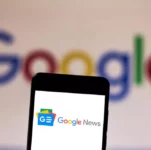Audience monetization is a key issue for every digital publisher. While ad revenue remains a reliable strategy for many outlets, some may be better served by implementing a paywall.
The pandemic demonstrated that reliance on a single stream of revenue can be risky. Ad revenue fell 3.1% in 2020 before rebounding 22.5% in 2021. With that said, the emergence of inflationary pressures in the latter half of 2022 and the resulting widespread economic uncertainty have placed pressure on publisher’s ad revenues.
These developments underscore why the leading digital news providers across the US and EU have expanded their revenue strategies over the last decade to include paywall options.
Of 212 newspapers surveyed in 2019, 69% reported having some kind of online paywall, up from 64.5% in 2017.
A publisher can choose from four types of paywalls — each with its own range of benefits. These include the:
- Freemium paywall
- Metered paywall
- Dynamic paywall
- Hard paywall
But for online publishers, successfully introducing a paid subscription model is easier said than done. One study suggests that while three-quarters of digital publishers have some form of paywall, only 10% enjoy a thriving digital revenue model.
Given the challenges of successfully implementing a paywall — from picking the best paywall service provider to selecting which type of paywall will convert visitors into subscribers — it’s essential that publishers understand how their paywall might affect their search engine optimization (SEO).
Table of Contents
Can a Paywall Hurt a Site’s SEO?
Paywalls no longer affect a site’s SEO, though some technical caveats can impact visibility.
Google introduced the First Click Free (FCF) program in 2005 that prevented articles with a paywall from appearing in its SERPs. Essentially, if Google’s users could see an article in the SERPs, then they had to have access to it.
The search giant tweaked this policy twice in 2009 and 2015 by setting article limits, before ditching it altogether in 2017 in support of publisher efforts to boost subscription strategies.
It then published technical guidelines and best practices so that any publisher relying on subscriptions can ensure their website is visible in search.
How Blocking User Access Affects SEO
Whilst there are different types of paywalls, there are also different ways to block content, a topic State of Digital Publishing (SODP) explored with registration and subscription solutions provider Poool in this webinar.
There are two main methods of blocking:
- Front or user side: Easiest to bypass, lowest risk to SEO
- Back or server side: Harders to bypass, most risk to SEO
There is no one-size-fits-all solution to choosing the best method to limit access to content, and it depends on the publisher’s desired strategy.
For example, a publication that relies heavily on organic traffic and is new to paywalls might be better off with a user-side blocking method since it carries fewer risks associated with SEO. Publications that already use a paywall, want to plug leaks in it, and have the resources to tackle any associated technical SEO issues might be better off with server-side blocking.
The following table from the aforementioned webinar lists the pros and cons of each type of blocking method.
| Pros | Cons | |
|---|---|---|
| Front blocking – CSS | – Speed of integration – Better user experience (no lag when unblocking) – Easy coding – No risk of conflict with other scripts for the <div> article (ad, editorial) – Low SEO risk | – Easy to bypass |
| Front blocking – JS | – Speed of integration – Better user experience (no lag when unblocking) – Weak tech development – Low SEO risk | – Easy to bypass – Possible conflict with other scripts for the <div> article (ad, editorial) |
| Server blocking (with SEO optimization) | – Safer than a front-blocking method – Hard to bypass (except in a few cases) | – Time and cost of implementing – Potential lag when unblocking for users – Requires a good understanding of SEO |
| Server blocking (without SEO optimization) | – Safest method – Impossible to bypass | – Time and cost of implementing – Potential lag when unblocking for users – May impair SEO as only the header is referenced |
Effective SEO Strategies for Paywall Content
Publishers that embrace paywalls but don’t take SEO into consideration may not see their content rank on Google and other search engines, hurting content discoverability.
Google’s Guidance
Google offers some guidelines for publishers that want to implement paywalls.
After ditching FCF in 2017, Google replaced it with Flexible Sampling. There are two types of sampling that Google advises publishers to use: metering and lead-in.
The former gives users a quota of articles before blocking access to content, while the latter limits viewing to a small portion of the entire article.
Let’s look at each in a bit more detail.
Metering
Users can see a certain amount of free content within a certain amount of time before they’re asked to subscribe. Cookies keep track of the number of articles a user accesses. When the limit is reached, a request is sent to show the paywall to the user.
Google encourages publishers to provide 10 articles per user monthly as a starting point before experimenting to find the number that delivers the best conversion rate.
Digiday is an example of a website that uses a metered paywall.

Lead-In
This option is effectively a hard paywall. The user can see the headline, first paragraph, or 100 words of an article. This approach is a compromise that allows the user to evaluate the quality of the content without giving it away entirely.
Lead-in is more often used by sites with premium, evergreen content such as specialized research, videos or statistics.
Even though this option complies with Google’s guidelines, it can cause frustration for users and result in a higher bounce rate. This means that users click on the article from search results but click off immediately as they cannot access the full content.
The Wall Street Journal is an example of a publisher that favors the lead-m approach.

Deciding which approach best suits — metering vs lead-in — depends on the publisher’s editorial and monetization strategy.
Use Structured Data
While publishers should already be using structured data — including NewsArticle structured data — to tell Google about their content, schema markup is also used to allow Googlebot to crawl and index paywalled content.
Structured data allows Google to differentiate paywalled content from cloaking, which is when the content a search engine sees is different from that a user sees. This is a violation of Google’s guidelines.
If publishers want to gate their content, they need to add a class name to their HTML code. See the below example from Google:

To ensure that Google understands your content and differentiates it against cloaking techniques, define isAccessibleForFree as false in the schema whilst also using a selector attribute, i.e., CSS within the content block in which the content is placed to allow search engines to crawl and index the content.

Publishers should also use a noarchive meta tag to prevent users from accessing the full version of the article through Google’s cache.
AMP and Fast Loading Paywalls
Google’s accelerated mobile pages (AMP) tech delivers content faster on mobile devices. Implementing AMP in an article means creating a second version of the web page, which is then presented to the user when accessed from Google on mobile.
Content served on AMP pages can be protected by specifying via Publisher Runtime which different users can view in different sections.
For example, anonymous users can see some content, but the full article can only be seen by registered users or users with subscriptions. This approach gives publishers the control to decide what to show and when.
Microsoft’s Advice
While Google is pushing Flexible Sampling as a means of market research, Microsoft has shown little interest in this approach. Instead, Microsoft’s search engine Bing announced in May 2022 a set of SEO best practices that would benefit publishers.
It advocates that publishers should give Bing full access to content behind a paywall while at the same time preventing gated content from being leaked by using either of the following:
- A robots meta tag in the page’s header section, including either of the following:
- <meta name=”robots” content=”noarchive”>
- <meta name=”robots” content=”nocache”>
- An X-Robots-Tag, a custom HTTP response header, is functionally the same as a robots meta tag but also avoids caching PDF and other Microsoft Office files. It should contain either of the following:
- X-Robots-Tag: noarchive
- X-Robots-Tag: nocache
While Google advocates the use of structured data, Microsoft is more ambivalent. Bing principal program manager Fabrice Canel said that while using structured data could help, it was not a “strong requirement for me”.
Nevertheless, given that Google has a roughly 92% share of the search engine market compared to Bing’s 3%, we’d advise using structured data.
SEO Strategy for Premium Content
While digital publishers may consider a paywall to find the right balance between bounce rates and traffic revenue, they need to consider several elements before jumping in.
Content Discovery
Users need to be able to access parts of the content to evaluate its worth before they are asked to purchase, as they will only engage with content they know exists. Crafting a strategy in order to address a search engine’s role in content discovery is important to increasing traffic to a site.
Publishers should use Google Search Console (GSC) to determine and fix any SEO performance issues to ensure their content is visible in SERPS.
User Experience
Encountering a paywall may be a frustrating experience for users. Publishers can manage that frustration by clearly signaling to the user how many articles they can access in a given period of time, how many they have left to view and how they can gain access to more content.
Metering limits can be increased if the visitor registers as a free user instead of remaining anonymous. Research suggests that virtually all of the unsubscribed traffic that lands on publisher sites remains anonymous, meaning media outlets are missing out on useful audience data.
User experience is trickier for sites using a hard paywall where the content is partially or fully blocked, as publishers have fewer options to manage the user’s frustration.
Conversion
Experimentation is needed in order to discover the right amount of content a publisher can give for free. This is part of what is called conversion rate optimization (CRO).
One INMA study showed that 10% of online readers can drive more than 74% of a publisher’s revenue (PDF download). This highlights the importance of creating a solid paywall strategy that focuses on “super users”, identifies what drives customer loyalty and what turns them into subscribers.
For bigger publishers with a sizable audience, this limit may be different for each audience segment.
US sports publisher The Athletic launched in 2016 with a hard paywall, believing that the ad revenue model wouldn’t work for its style of sports journalism. However, the subscription-led approach was unable to cover the company’s costs in the years leading up to its acquisition by The New York Times in 2022.
The Athletic is reported to have posted net operational losses of $54 million in 2019, $41 million in 2020 and $55 million in 2021.
The New York Times’ acquisition of the sports news outlet, however, led The Athletic to switch to a flexible paywall as well as plans to introduce more traditional advertising beyond sponsorships (PDF download).
Content from our partners
The Athletic is an example of why online publications need to keep testing what works and doesn’t work with their paywall strategies.
Keyword Strategy
When presenting a SERP, Google considers the search intent behind the keywords used. Ranking higher for a specific search depends less on simply having keywords and more on fulfilling the searcher’s intent when using those words.
Content protected by a paywall tends to fulfill an informational intent. If a publisher is using a premium content or hard paywall approach, it is probably because they have specialized or exclusive content that would be difficult to get anywhere else. In this case, the intent they answer is probably more in-depth research than just informational.
For example, the keywords “SEO strategy” return a series of articles covering the basics of SEO. It would be very difficult to compete for that keyword with an article protected behind a paywall.
Content Recommendations
Publishers implementing the lead-in option to show partial content to visitors from search engines must pay particular attention to the content they show the user.
The objective is to manage a user’s disappointment in encountering a paywall and provide them with the required information to evaluate if the content meets their needs.
Instead of just showing the user the article’s first few paragraphs, the best approach is to craft an executive summary. This way, the user will have a more complete picture of the information contained in the article and will be able to make a better-informed decision around subscribing.
Implementing structured data in this executive summary can help that content appear in a rich snippet, improving its visibility in the SERPs.
For lead-in summaries, we recommend including:
- A descriptive headline that contains the main keyword that is targeted within the article.
- A short paragraph summarizing the content of the article, providing an accurate description and the main arguments/topics.
- A short list of key facts, statistics or questions answered by the article with a brief answer.
- Information of what’s behind the paywall: a video, a pdf, in-depth research.
How Google Updates Affect Paywall Strategies
It doesn’t happen often, but Google updates can damage the effectiveness of a publisher’s paywall and is something that needs to be constantly monitored.
For example, Google’s Chrome 76 update in July 2019 closed a privacy loophole, but it also enabled users to bypass metered paywalls.
Final Thoughts
Every publisher needs to take their individual circumstances into consideration when it comes to their paywall and digital marketing strategies. There is no “one size fits all” approach or solution available.
However, while experimentation and testing are necessary, we recommend focusing on three main objectives when reviewing paywalls from an SEO perspective:
- Ensure that the paywall’s technical implementation is aligned with search engine recommendations so content is visible in search engines.
- Manage user expectations as they arrive and encounter a paywall. Take search intent into consideration and build a good user experience that signals to Google that the content is useful. This is especially important when implementing executive summaries.
- Balance these requirements with the need to optimize the conversion rate to maintain sustainable growth in subscriptions.
While paywalls help lessen publisher dependency on an, at times, volatile advertising market, it’s also important to recognize that paywalls can also play an important role in improving ad revenue.
For instance, Google’s plan to phase out the third-party cookie in 2024 means first-party data is increasingly important. Different paywall and content analytics tools can help publishers collect valuable data and better understand what their audiences and, therefore, advertisers want.
This data can also help in reaching new subscribers and retaining existing ones. Since the success of subscriptions depends on the relationships publishers develop with their visitors, having access to the right type of data is essential.













